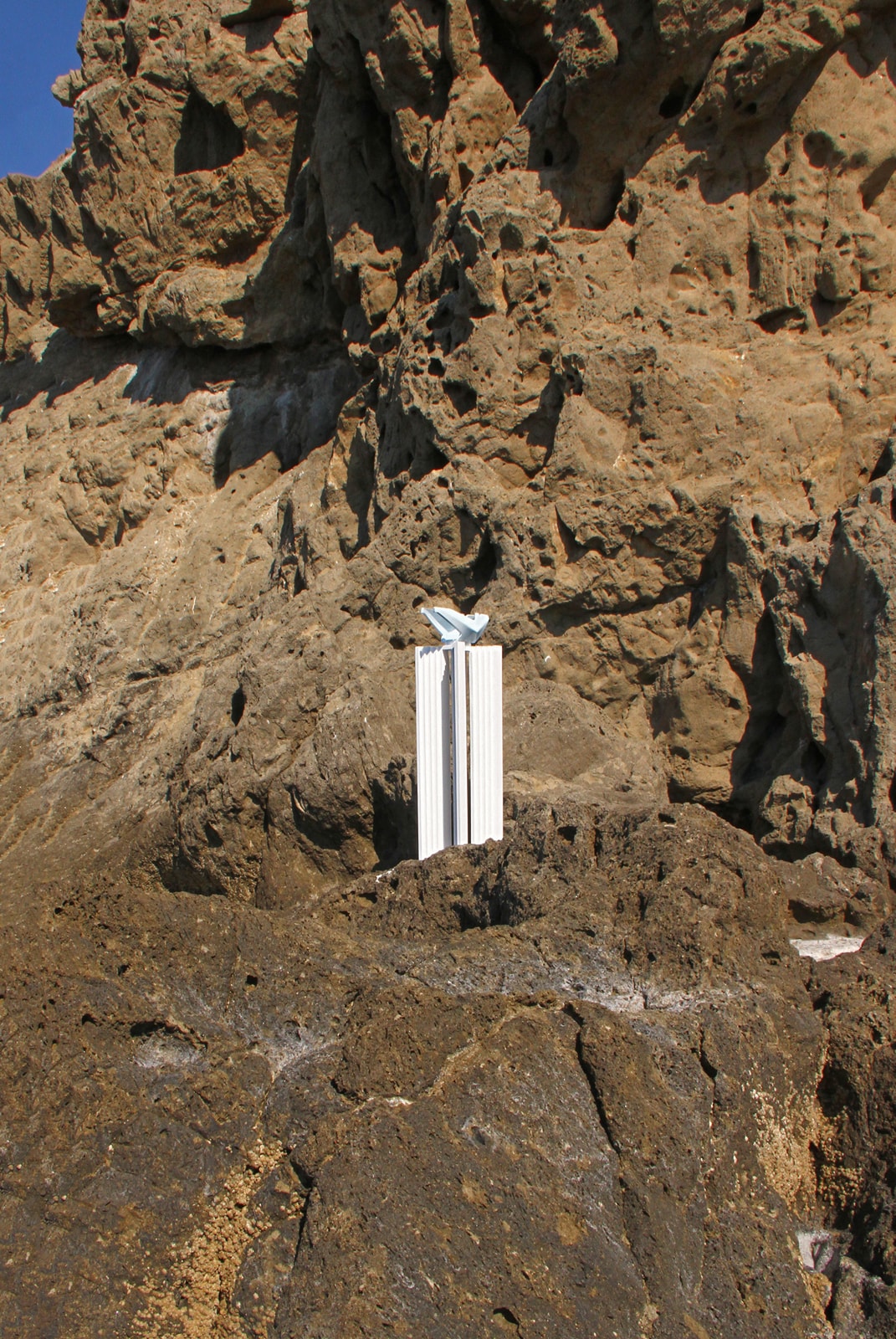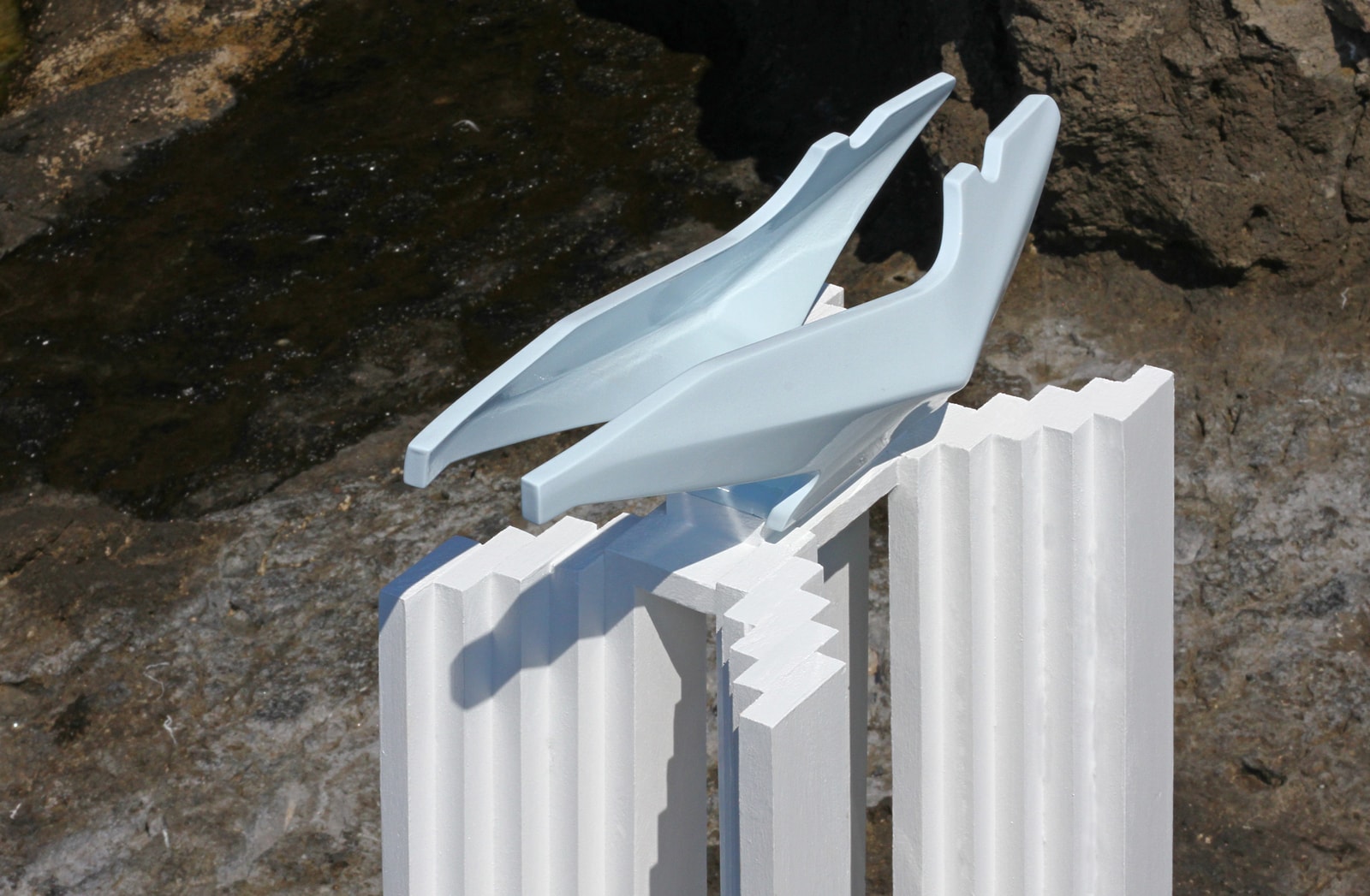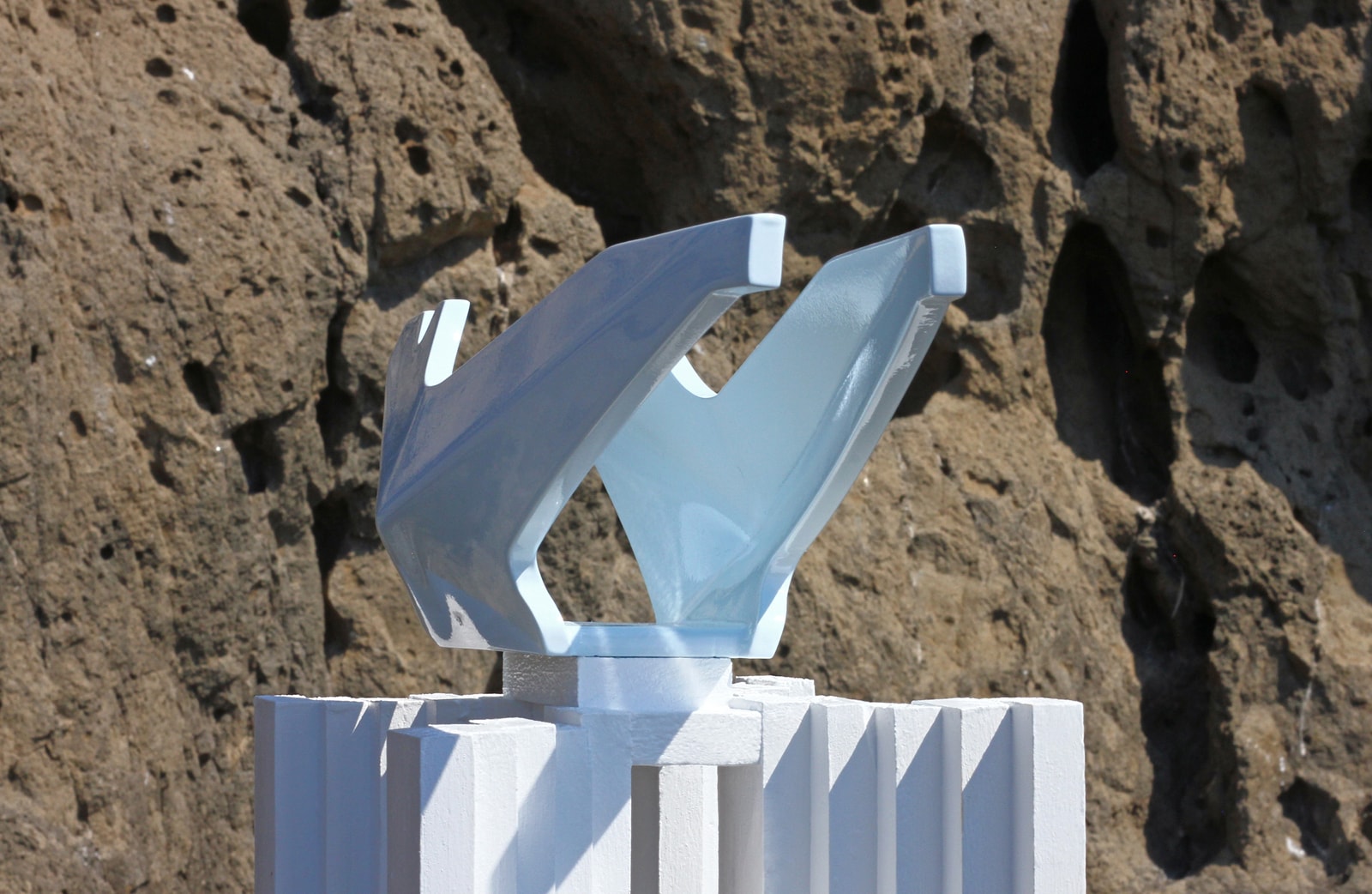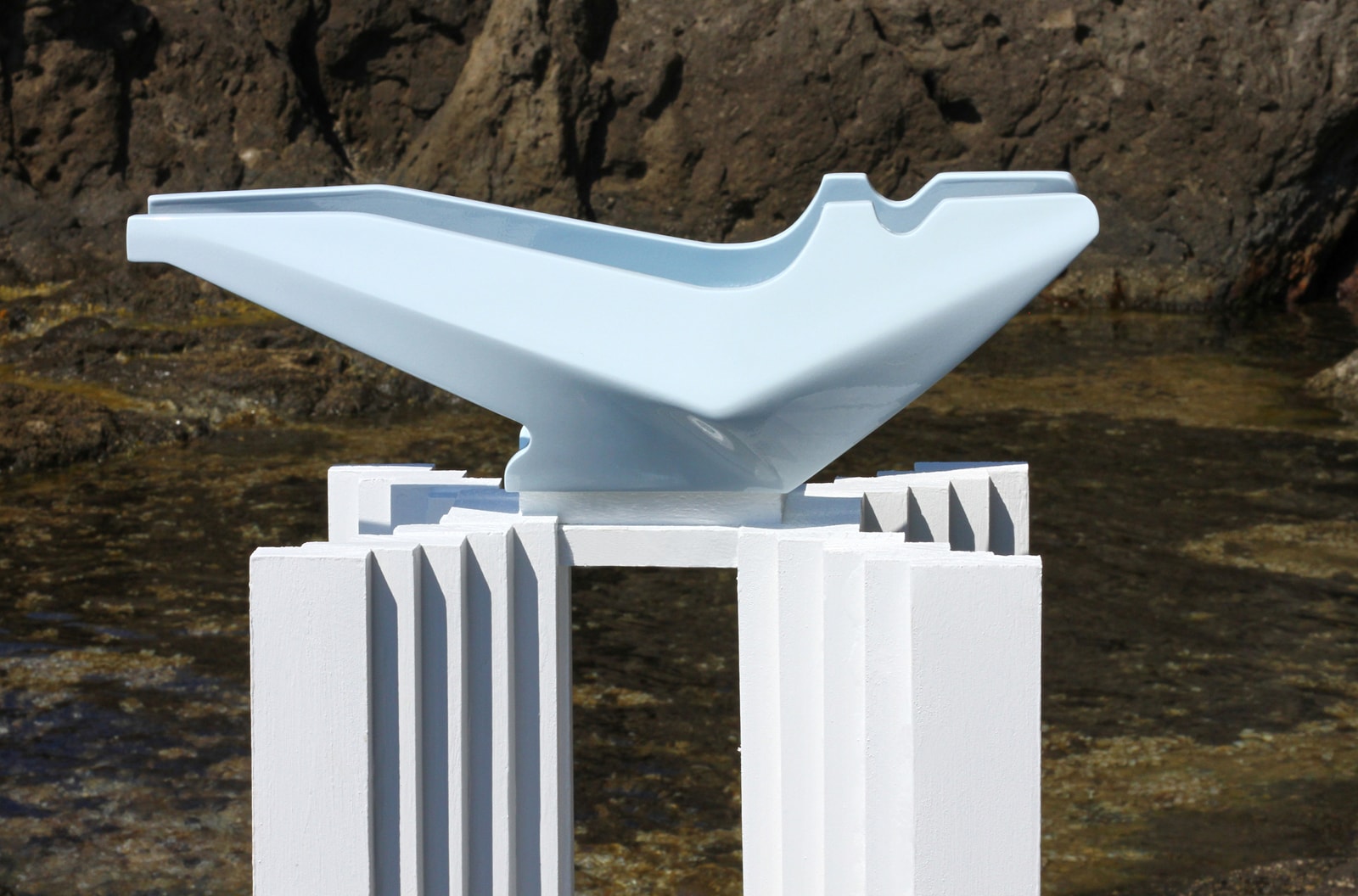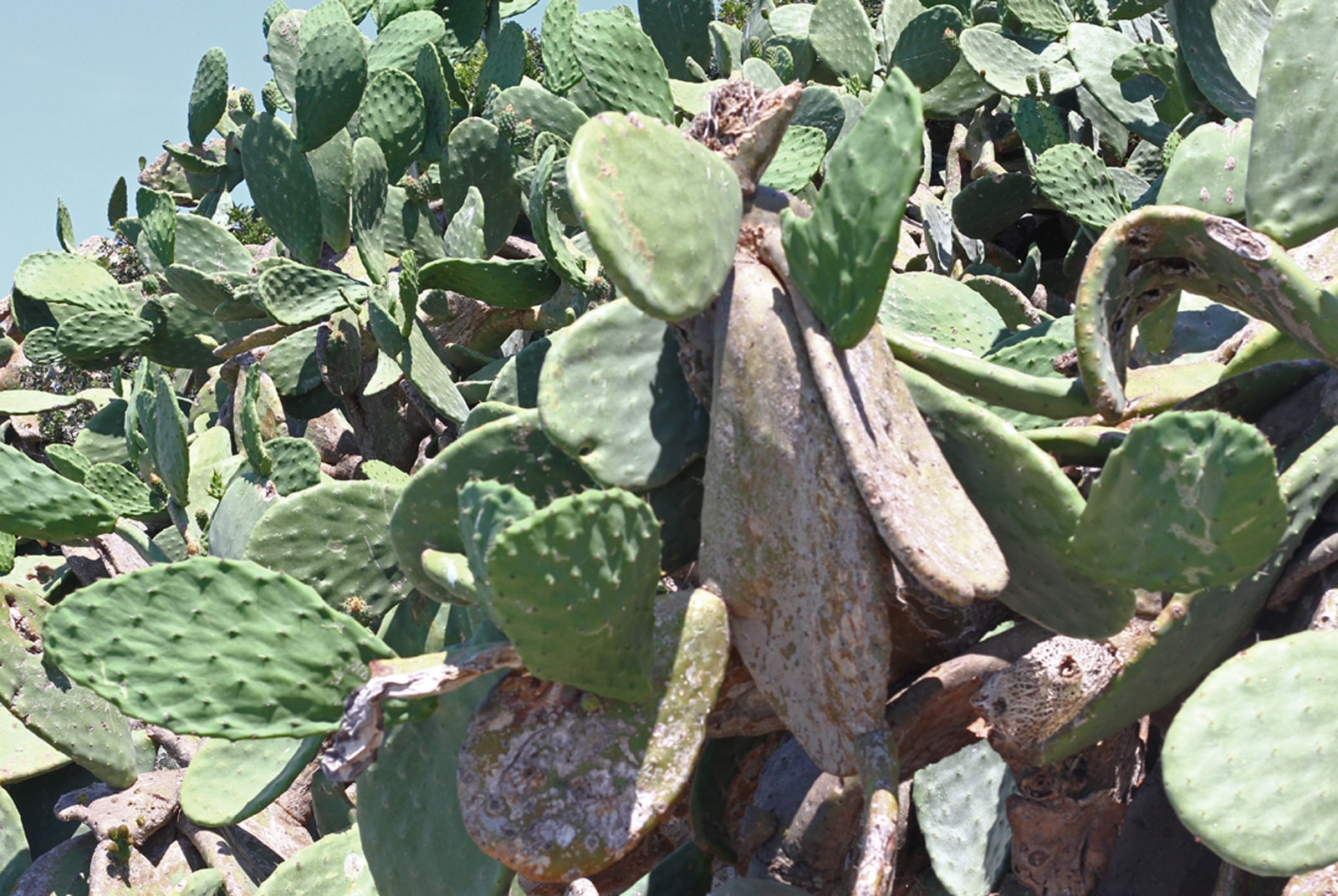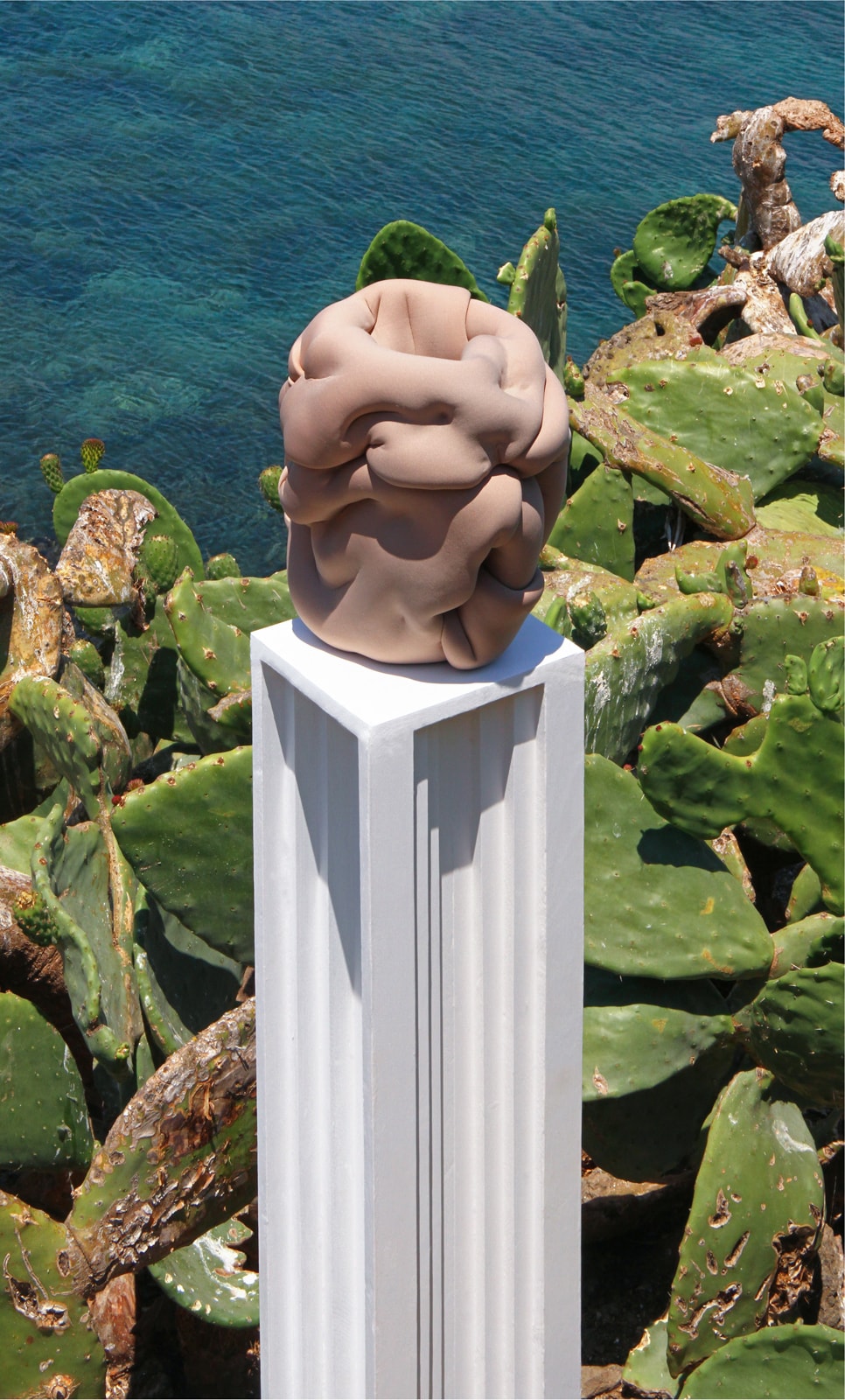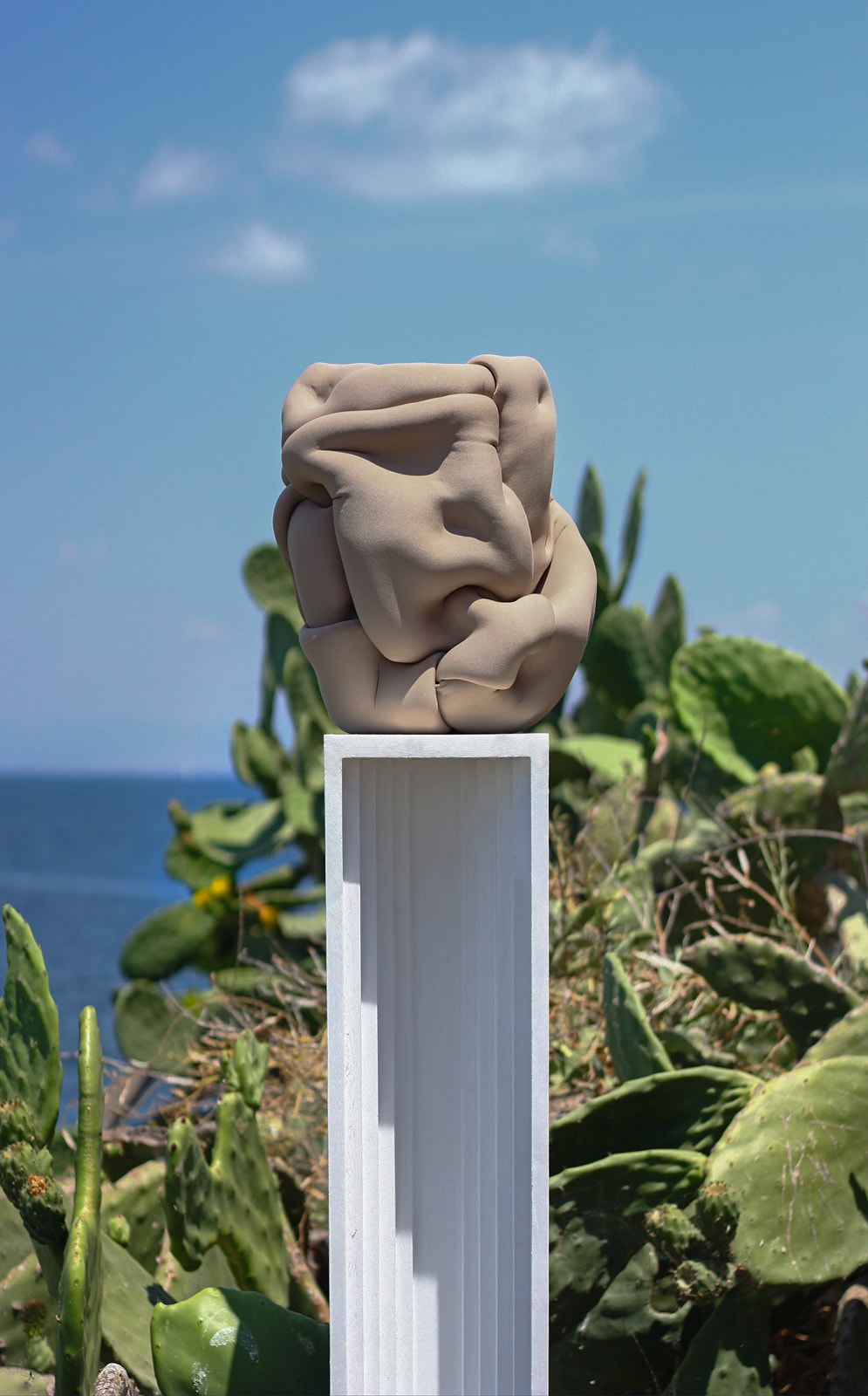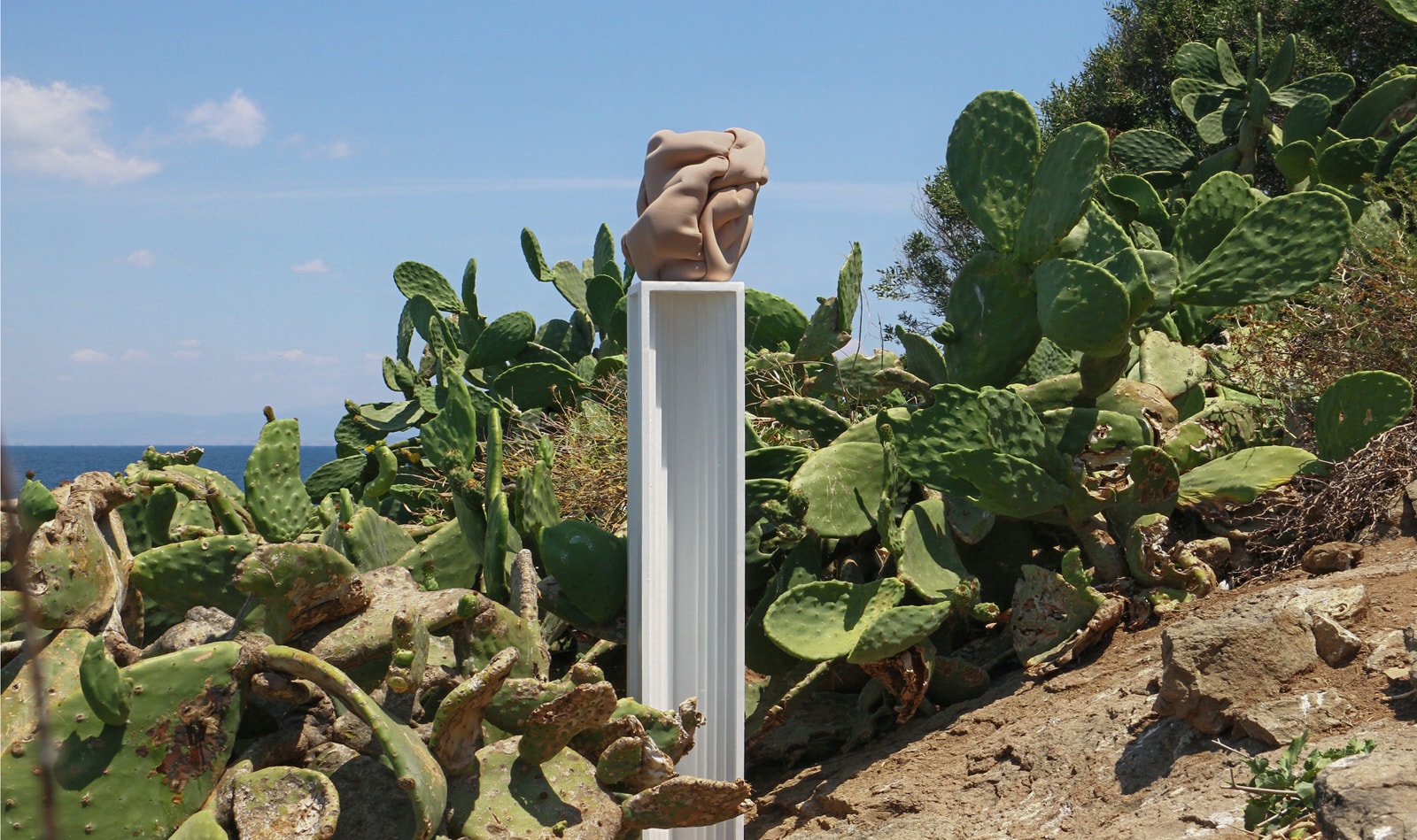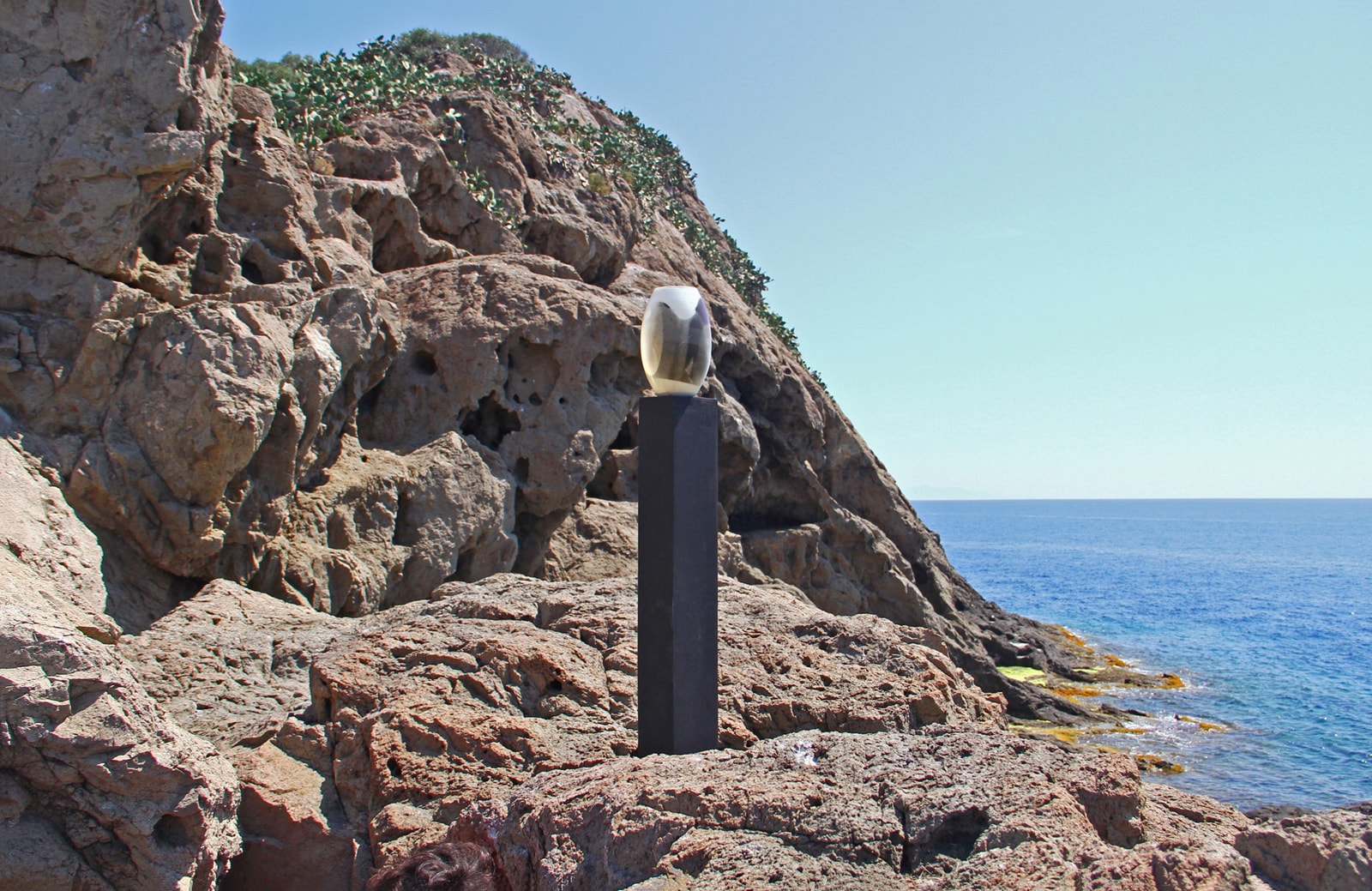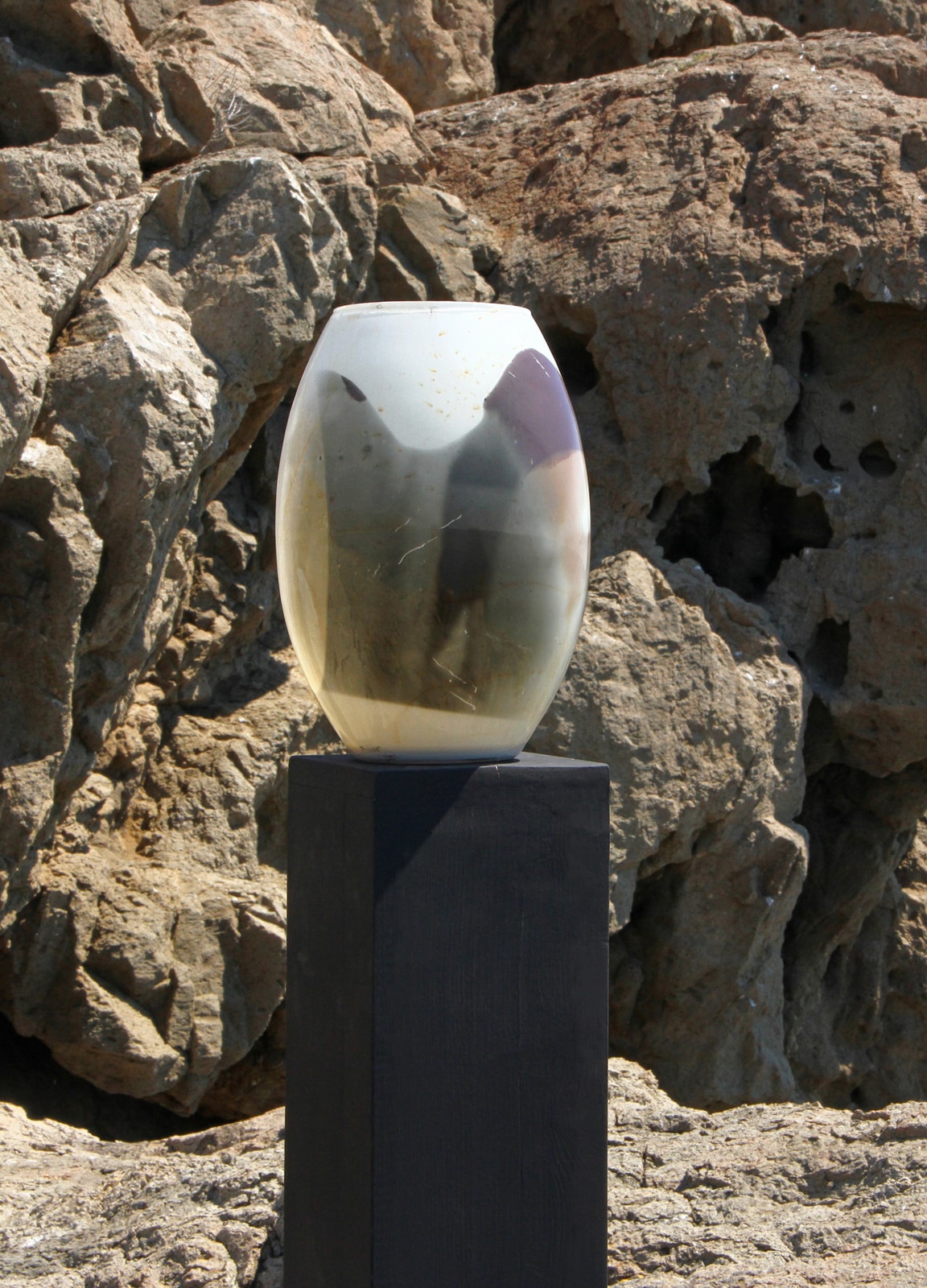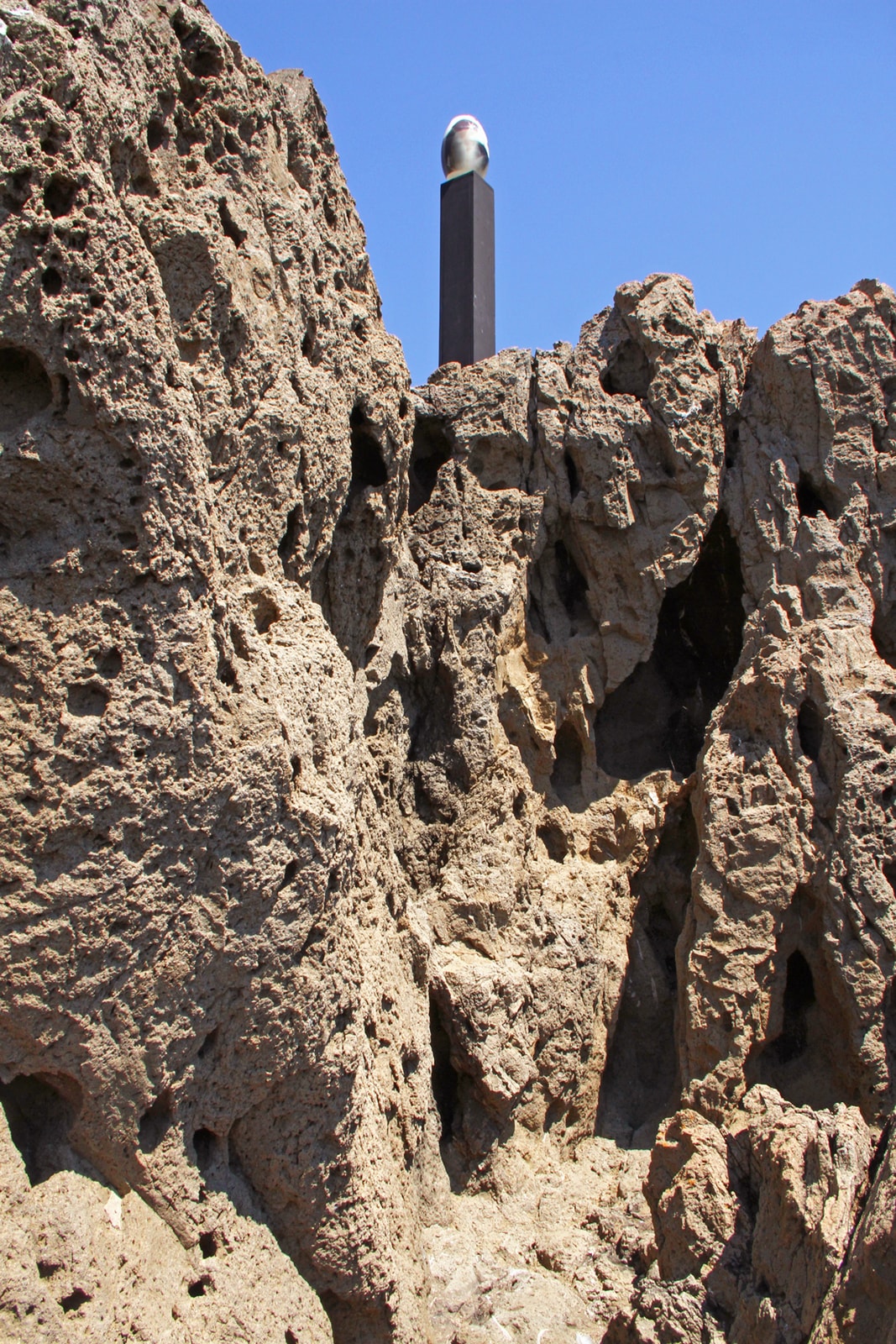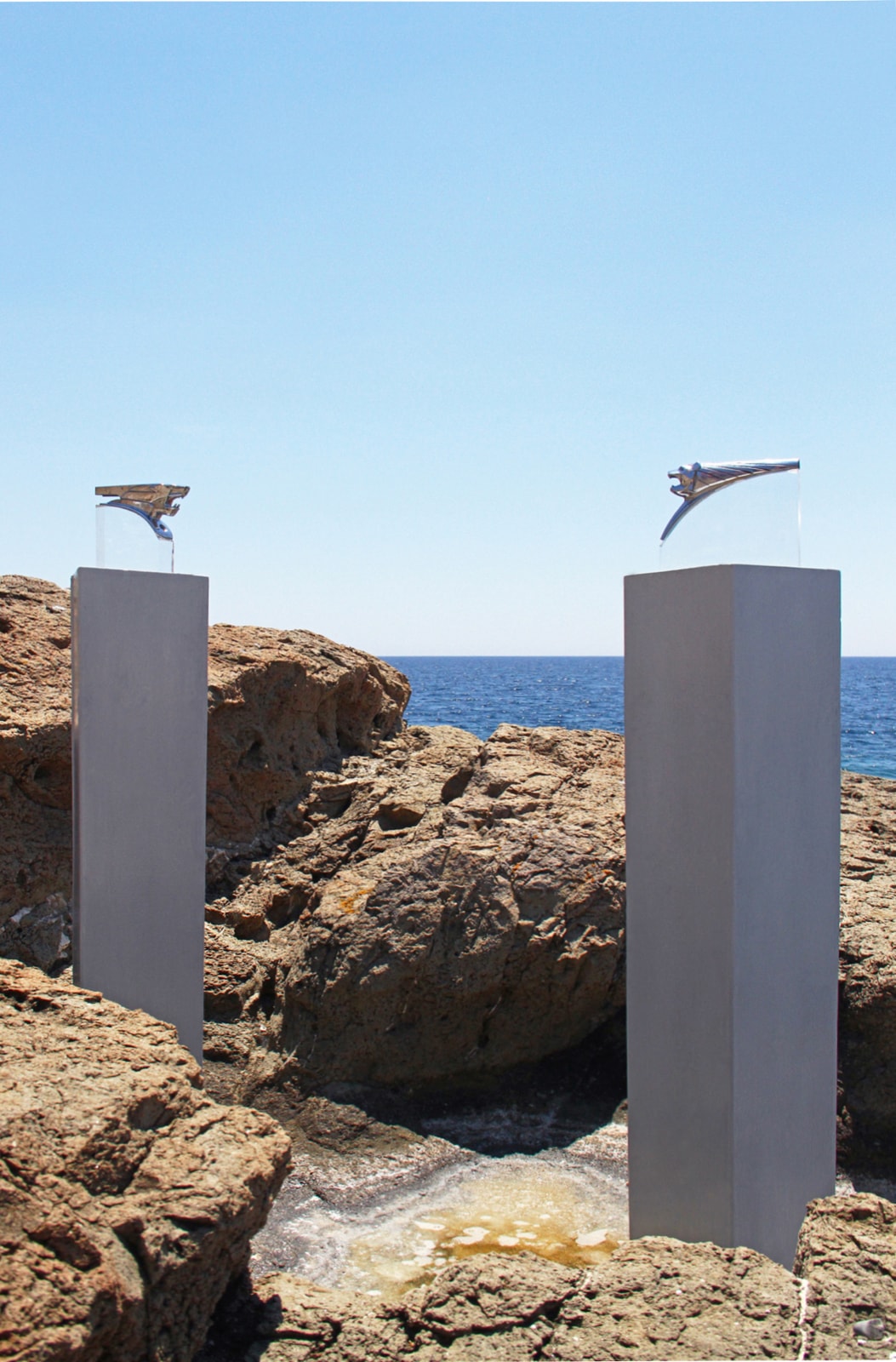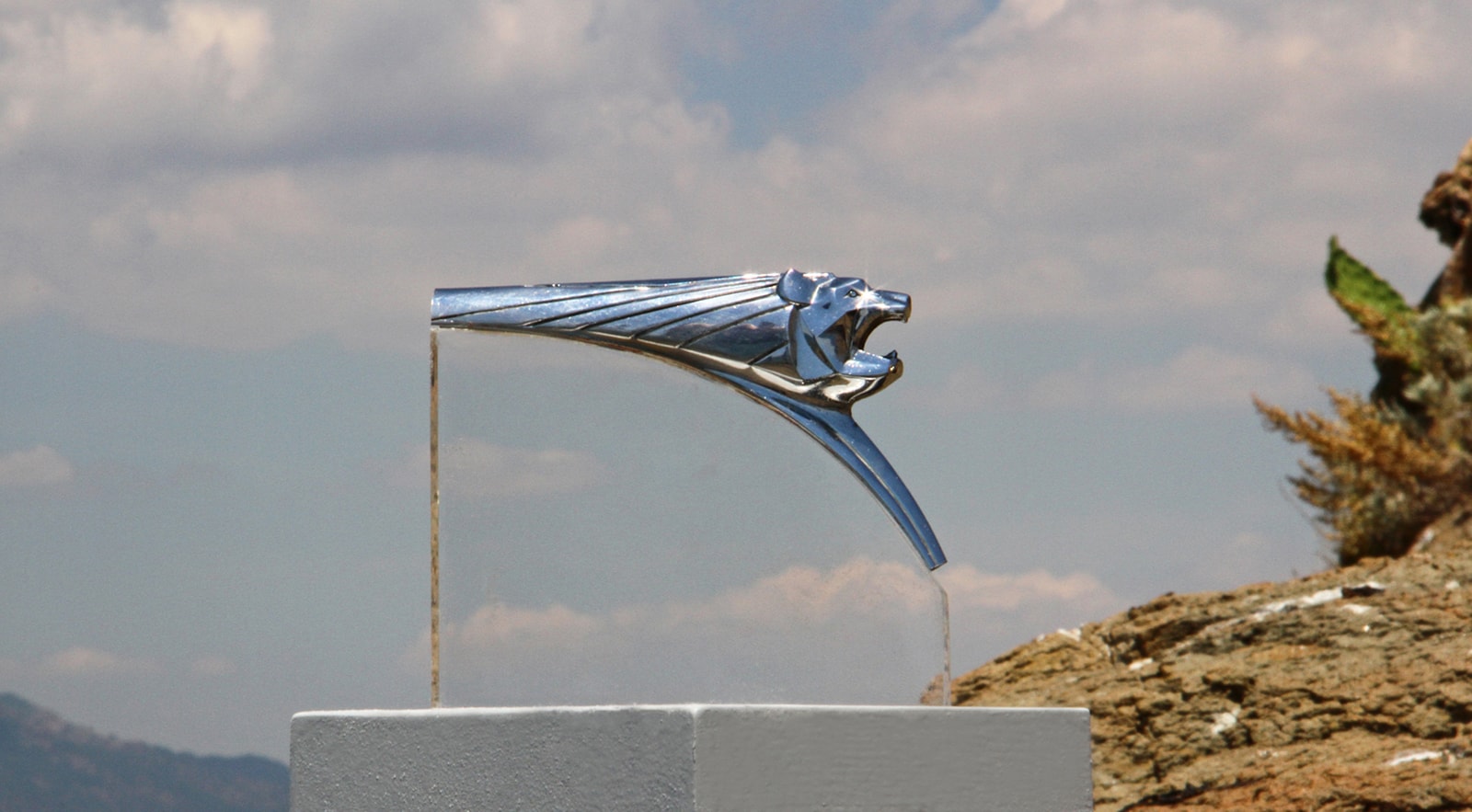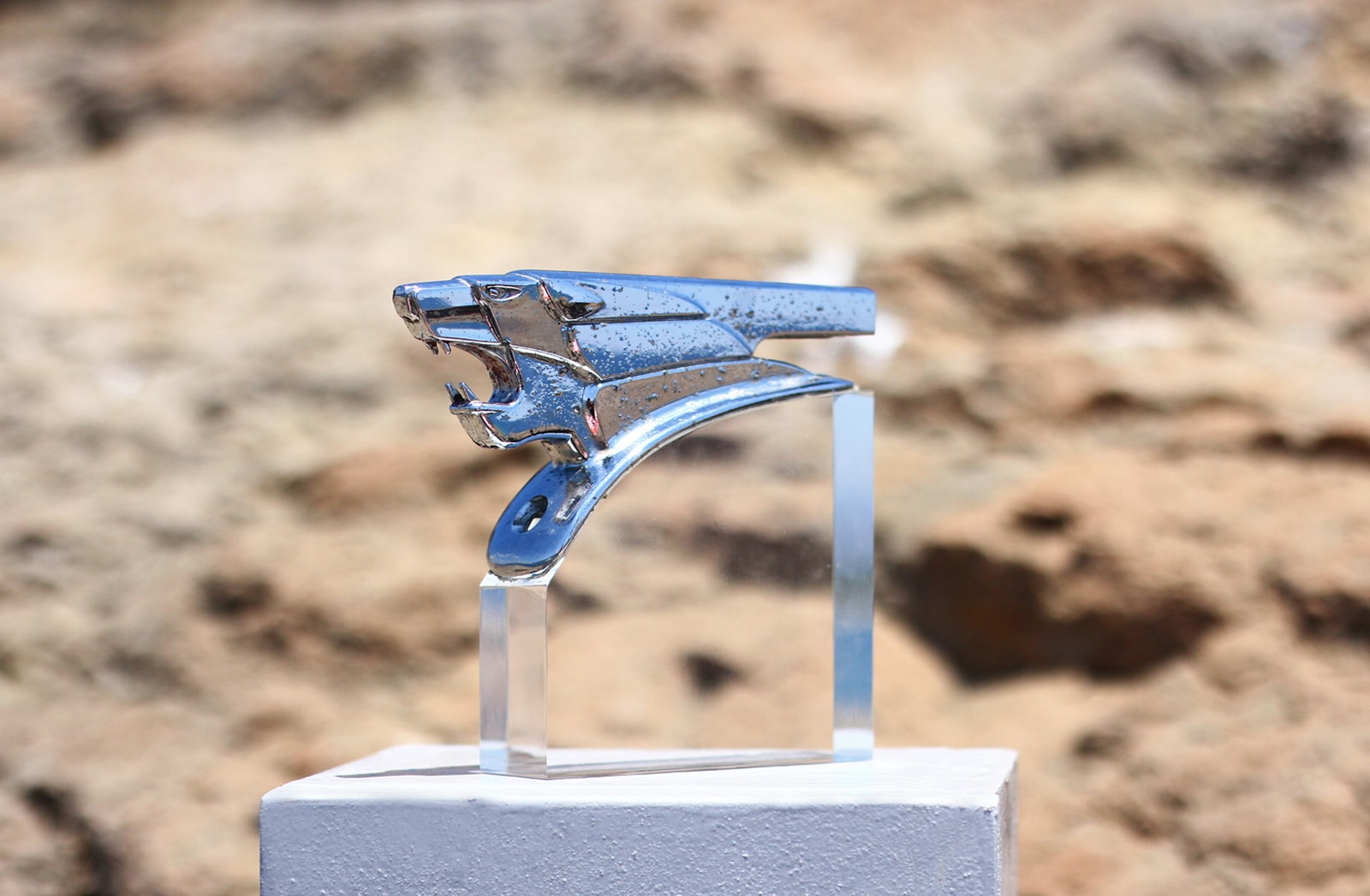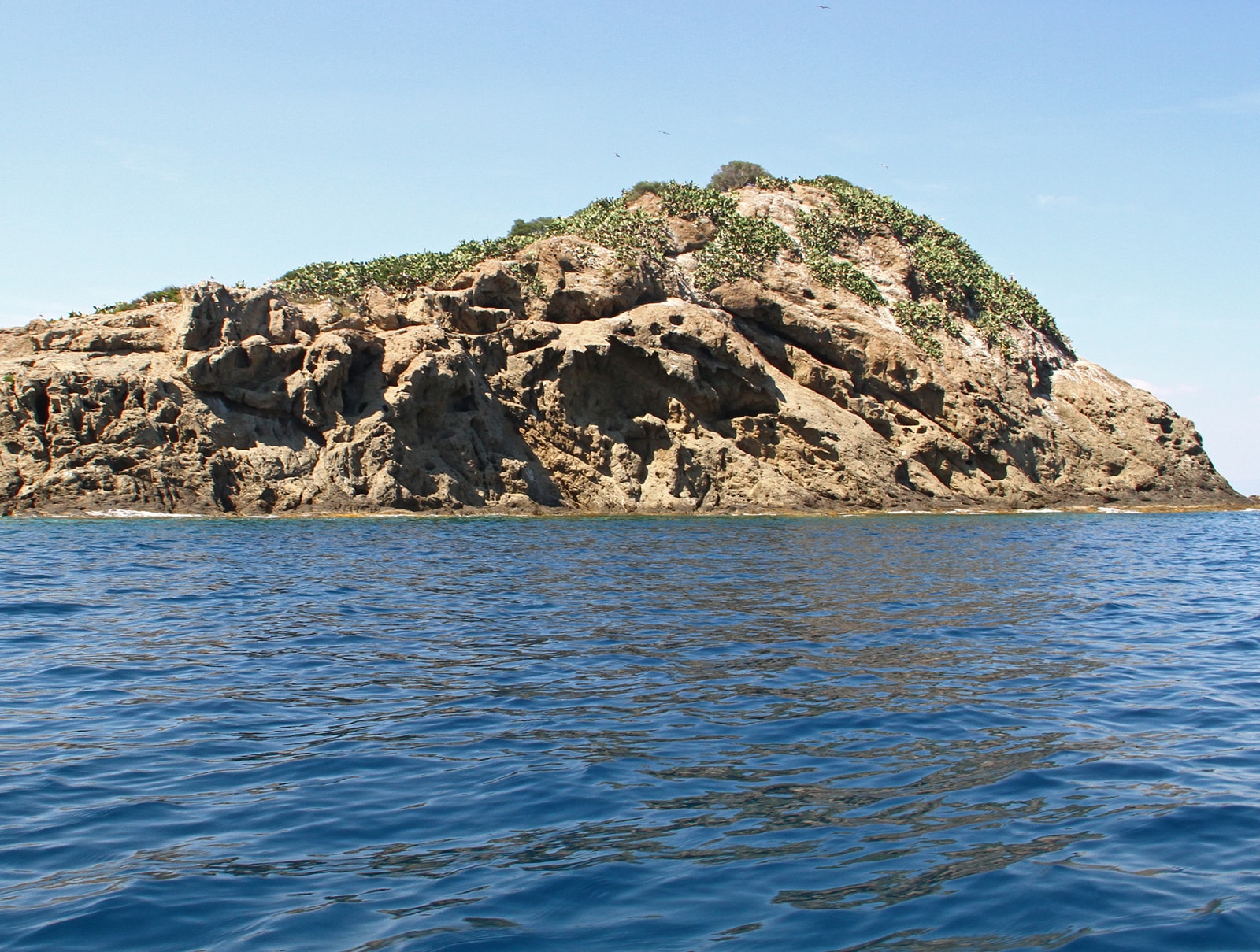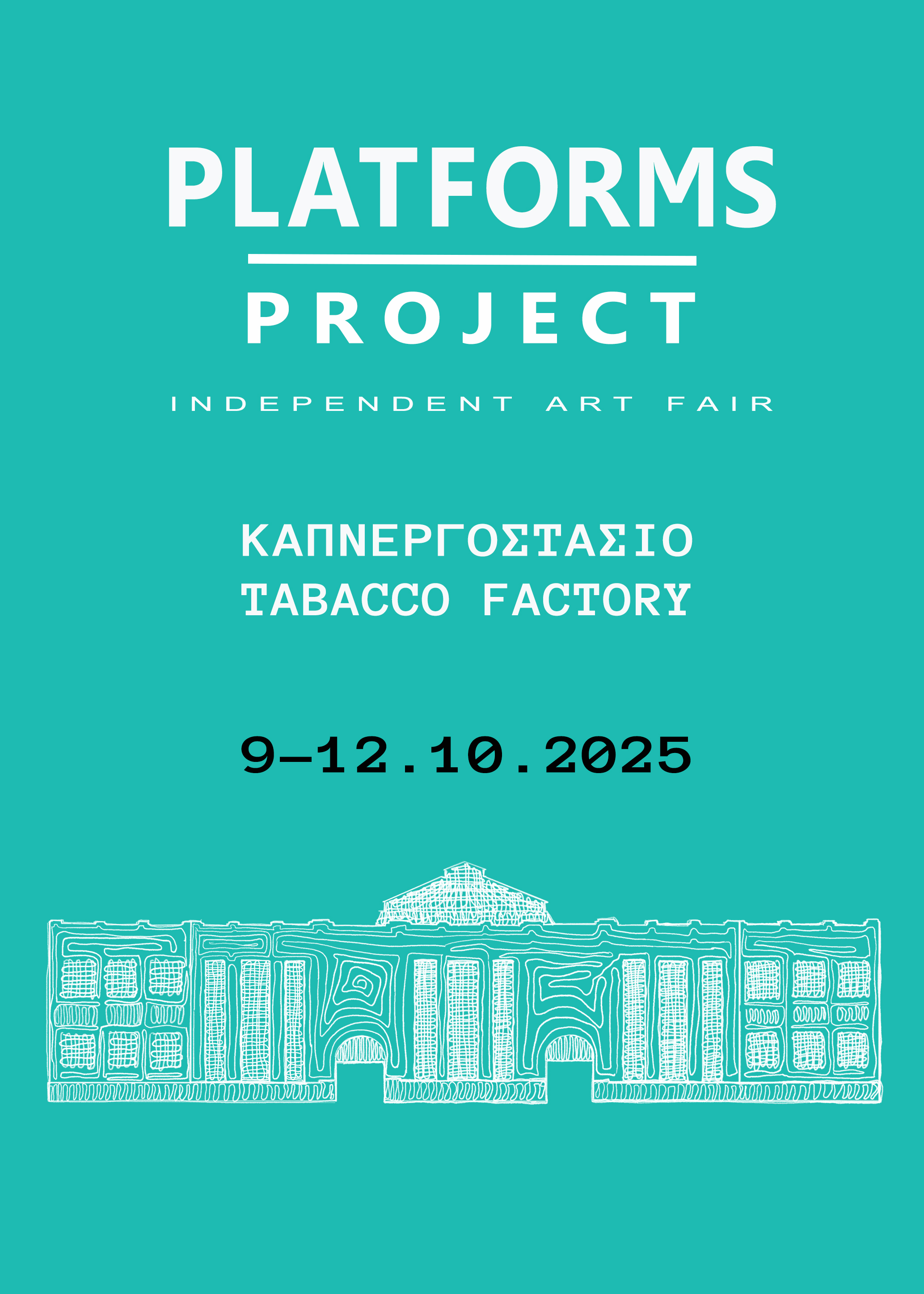An abandoned island off the coast of Sardinia, Italy, has become a field for experimentation and research about the relationship between artistic practice and the image that disseminates it. Artists Enrico Piras and Alessandro Sau are the founders of Montecristo Project, an ongoing artistic endeavour that organises exhibitions on a small island that is not accessible to the public. This project is part of the two artists’s ongoing research on how the documentation images of an exhibition contribute to the artistic legitimation of the contemporary work of art.
This summer, Montecristo Project organise their first group exhibition on the island titled I S L A N D, with works by Carlos Fernandez Pello, Karlos Gil, Alfredo Rodriguez and Alessandro Vizzini. The sculptural objects comprising the exhibition are scattered across the island and come in dialogue with its distinctly Mediterranean topology and flora. By turning the documentation images into an artwork in its own right, the two artists-curators invert the logic of an exhibition and turn it from an experience of space and matter into an imaginary journey facilitated by the images. In the following interview, Piras and Sau explain a bit more about the project and how it relates to their own practice.
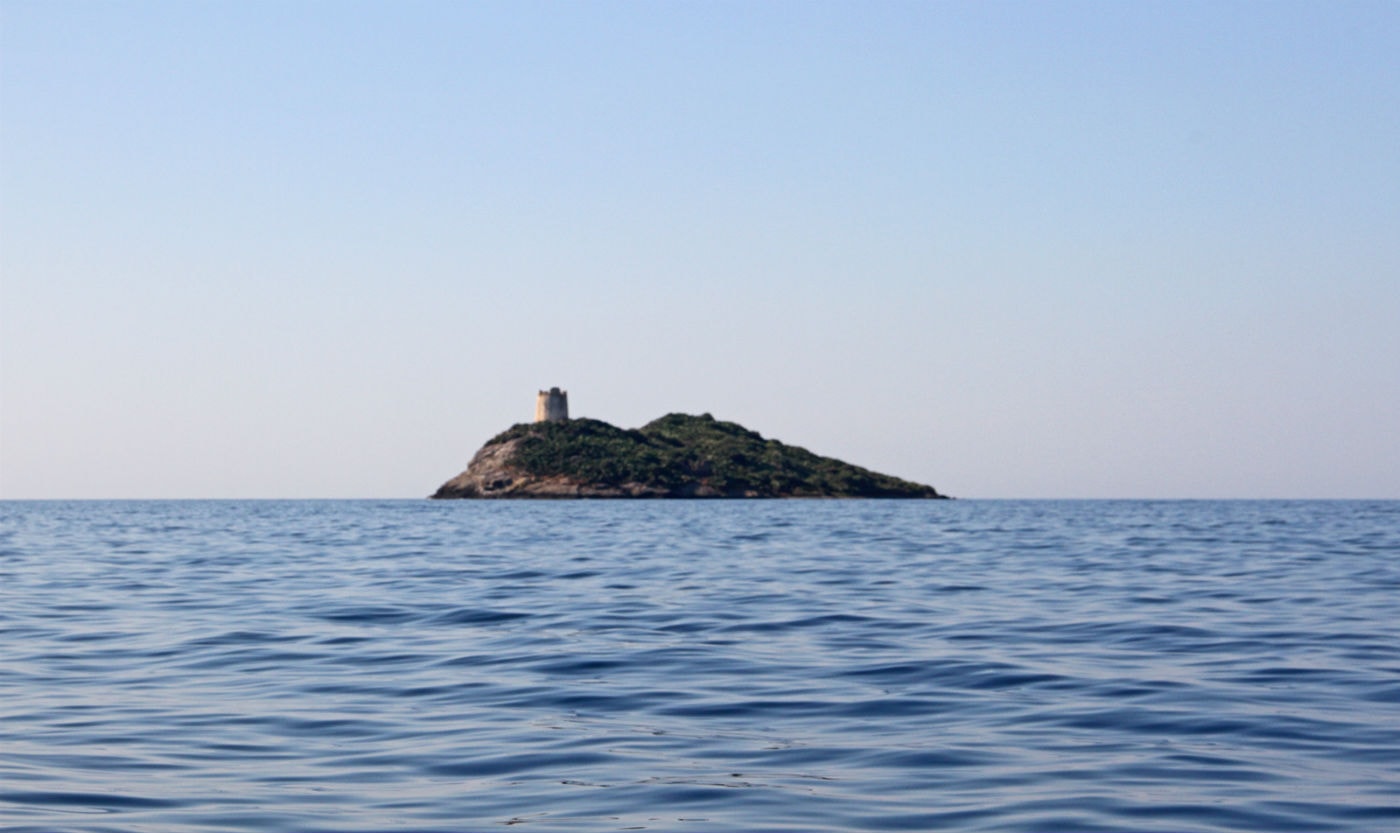
How big is your island? Is the location secret?
The island that hosts the project is kept deliberately secret, so that works can be installed and left for some time there in the indoor space of the tower or outside in the landscape. The islet is quite big and hosts a variety of environments, from the small curved beach that serves as a comfortable sandy dock to the path of cacti leading up to the tower, or the rocky side exposed to the open sea. Here is where we installed the most part of our last exhibition's pieces.
How did you find yourself on the island and decide to use it for contemporary art?
This choice didn't come as a sudden idea, but is the outcome of a long ongoing way of working. As artists we have been collaborating on a project called Occhio Riflesso, where our own works where exhibited in very unusual locations, like caves, domus de janas (Sardinian archaeological tombs), abandoned mining sites and so on. We have been choosing those sites according to the nature of our own works, scouting locations that could host them and enhance their formal and conceptual nature. When we decided to extend this way of working into other artists (the first of which was Salvatore Moro) we looked for an even more isolated and autonomous space, both physically and conceptually, [that would have its own] narrative and be independent. What better than a deserted island?

What is the curatorial idea behind the selection of artists and works?
Ours is not exactly a space; we conceive it as an artistic work and the invited participants are artists we really appreciate and wish to work with. By not being a regular space, our selection is very free and our program very irregular — so we exhibit either forgotten, underestimated (in our opinion) artists from past generations (like Salvatore Moro or Tonino Casula) or artists closer to our generation, whose works we find compelling and deeply rooted into material and conceptual research.
The plinths on which the sculptures sit are like sculptures in themselves. Who made them and is there a design concept behind them?
When we conceive an exhibition, the setting and display of the works is part of our artistic practice, as does the photographic documentation of the show which we consider as an autonomous work. The plinths for I S L A N D were designed by us according to the pieces and the intention of the artists. Some are very simple and straightforward designs, as those for Karlos Gil or Alfredo Rodriguez. Fernandez-Pello's and Vizzini's plinths are conceived as small Mediterranean architectures, with straight edges and regular shadow-play. So in this sense they are conceived as artworks designed to host and support other pieces.
How can someone visit your exhibition?
This is actually not possible, unless you are one of the invited artists exhibiting on the island.

